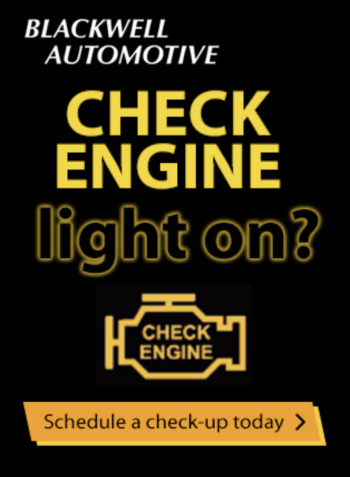

Welcome to Bumper to Bumper Radio!
Drive in anxious and cruise out confident with the best automotive information for your vehicle! Tune in to KTAR News 92.3 every Saturday from 11 a.m. to noon as Matt Allen helps listeners with their car problems. The show call in number is 602-277-5827.
Latest News From Bumper to Bumper Radio
Lauren Fix joins Boom Bust to talk about Tesla and other Auto Industry news. Here is the inside scoop on Elon Musk's trip to China and future plans to build a factory in China.

The national gas price average is $2.87, which is a penny more expensive on the week. Pump prices in nearly 30 states are seeing a jump of as much as eight cents, a dozen states saw prices drop and another dozen states’ gas price averages remain stable from last Monday.
“Demand for gasoline this summer remains very strong week-over-week, driving gas prices higher alongside rising crude prices,” said Jeanette Casselano, AAA spokesperson. “Today motorists are seeing gas for $2.76 or more at 56 percent of gas stations across the country.”
Today’s gas price average is six-cents cheaper than last month, but 61-cents more expensive than at the same time last year.
Quick Stats
The nation’s top 10 largest weekly changes are: Delaware (+8 cents), Michigan (-7 cents), Ohio (+6 cents), Indiana (+5 cents), Maryland (+4 cents), New Mexico (-3 cents), Pennsylvania (+3 cents), Georgia (+3 cents), Kentucky (+3 cents) and Oklahoma (+3 cents).
The nation’s top 10 least expensive markets are: South Carolina ($2.53), Alabama ($2.53), Mississippi ($2.55), Louisiana ($2.58), Arkansas ($2.60), Missouri ($2.61), Tennessee ($2.61), Oklahoma ($2.62), Virginia ($2.62) and Kansas ($2.66).
West Coast
Pump prices in the West Coast region are among the most expensive in the country: Hawaii ($3.73), California ($3.66), Washington ($3.44), Alaska ($3.40), Oregon (3.32), Nevada ($3.24) and Arizona ($3.00). Most prices in the region have declined on the week, with Arizona (-2 cents) leading the group.
Inventories of gasoline in the region fell for a third consecutive week, according to the Energy Information Administration’s (EIA) petroleum status report for the week ending on June 29. Dropping by nearly 150,000 bbl, total inventories now sit at 30.5 million bbl. However, inventories are approximately 2.2 million bbl higher than they were at this point last summer, which will likely help prices stabilize if there are any major supply disruptions in the region this week.

FELTON, California, July 3, 2018 - The Global Rear Spoiler Market is anticipated to reach USD 7.30 billion by 2025 with the contribution of growing demand for the SUVs and MPVs from the young generation. A Rear Spoiler is an automotive aerodynamic device that helps in spoiling the opposing air movement across the body of the vehicle. The spoilers present on the front of the cars are called as air dams that are essential for the engine cooling and high speed stability.
Some spoilers are fitted on the cars just for designing purpose or for improved aerodynamics. A rear spoiler supports in increasing the efficiency and decreasing the drag. The spoilers improve the traction capability of a car, improve the visibility of the car and reduce the weight of the car, technically. The Rear Spoiler Market is predicted to grow considerable at CAGR of 7.9% primarily owing to the manufacturing of plastic spoilers.
At present, several cars are well-furnished with Rear Spoilers to improve the fuel efficiency and reduce the rate of accidents. Most customers install the rear spoilers for designing purpose, which is a reason for increased demand. The bulk manufacturing of composite materials is anticipated to diminish the cost of raw materials in near future. This will ultimately reduce the overall cost of rear spoilers and produce a higher demand over the years.
The rising demand from SUVs (sports utility vehicles) and high-speed vehicles is expected to support the rear spoiler industry growth significantly. The carbon fiber, which is mostly used in the manufacturing of rear spoilers is preferred by the aftermarket since the customization is carried out by the independent service providers. The rear spoiler also possesses features like high strength, durability, improved finishing and appearance and lightless.
Browse 69 page research report with TOC on "Global Rear Spoiler Market" at: https://www.millioninsights.com/industry-reports/rear-spoiler-market

WASHINGTON, D.C. (June 27, 2018) –Apple CarPlay and Google’s Android Auto are less distracting to drivers when compared to built-in vehicle infotainment systems designed by automakers, according to new research from the AAA Foundation for Traffic Safety. While many of today’s infotainment systems create potentially unsafe levels of distraction by allowing drivers to perform complex tasks like programming navigation or sending a text, CarPlay and Android Auto were 24 percent (5 seconds) faster on average than the vehicle’s native system when making a call and 31 percent (15 seconds) faster when programming navigation. This difference is critical, as drivers who take their eyes off the road for more than two seconds double their risk of a crash. AAA is encouraged by these findings, as they indicate that popular infotainment systems can be designed in a way that is less distracting. Distracted driving is responsible for more than 390,000 injuries and 3,500 deaths every year.
“Google and Apple are proving that it is possible to reduce the level of demand in-vehicle infotainment technology places on drivers,” said Dr. David Yang, executive director of the AAA Foundation for Traffic Safety. “While improvements are necessary before any of the systems can be considered safe to use while driving, this research shows that smartphone-based software has the potential to offer a simpler, more familiar design that is less confusing to drivers, and therefore less demanding.”
The AAA Foundation for Traffic Safety teamed with researchers from the University of Utah to evaluate five vehicles – 2017 and 2018 models – to determine the amount of visual and mental demand placed on drivers by CarPlay, Android Auto and each vehicle’s native infotainment system. While CarPlay and Android Auto can still create potentially unsafe levels of distraction and should not be used to perform complex tasks when behind the wheel, they decrease the demand placed on drivers compared to similar technologies offered by automakers.
Researchers found that CarPlay and Android Auto did not differ significantly from one another in the level of overall demand. A rating scale was used to measure the visual (eyes-off-road) demand, cognitive (mental) demand, and the time it took drivers to complete a task using the systems. The scale ranged from low to very high levels of demand. A low level of demand equates to listening to the radio or an audiobook, while very high demand equates to an industry standard that produces demand similar to balancing a checkbook while driving. Both CarPlay and Android Auto generated an overall moderate level of demand while the native vehicle systems created very high levels of demand for drivers. AAA recommends that industry strive to design in-vehicle technology systems that do not exceed a low level of demand.

• Unique pairing of two performance legends – the final 2017 Dodge Viper and final 2018 Dodge Challenger SRT Demon – was a highlight at Barrett-Jackson Northeast auction in Connecticut
• 100 percent of $1 million hammer price for both of these iconic muscle cars benefiting the United Way
• 'The Ultimate Last Chance' lot included several pieces of memorabilia, such as authentication kits for each vehicle containing custom build sheets, authenticity letters, certification cards, iPads with videos and pictures, and other custom branded items
It was the type of offering that makes bidders and fans stop and pay attention: the last of two record-setting performance legends – the final 840-horsepower 2018 Dodge Challenger SRT Demon and the final 645-horsepower 2017 Dodge Viper – sold as a pair at the Barrett-Jackson Northeast auction at Mohegan Sun in Connecticut on Saturday, June 23.
The bidding was spirited, befitting the combined 1,485 horsepower of the cars on the stage. When the hammer dropped to end the "The Ultimate Last Chance" auction, the top bidder became the new owner of the Dodge Viper and Dodge Challenger SRT Demon, and the United Way was the winner, receiving 100 percent of the hammer price. The final price ranked as the highest during the four-day Barrett-Jackson auction.























